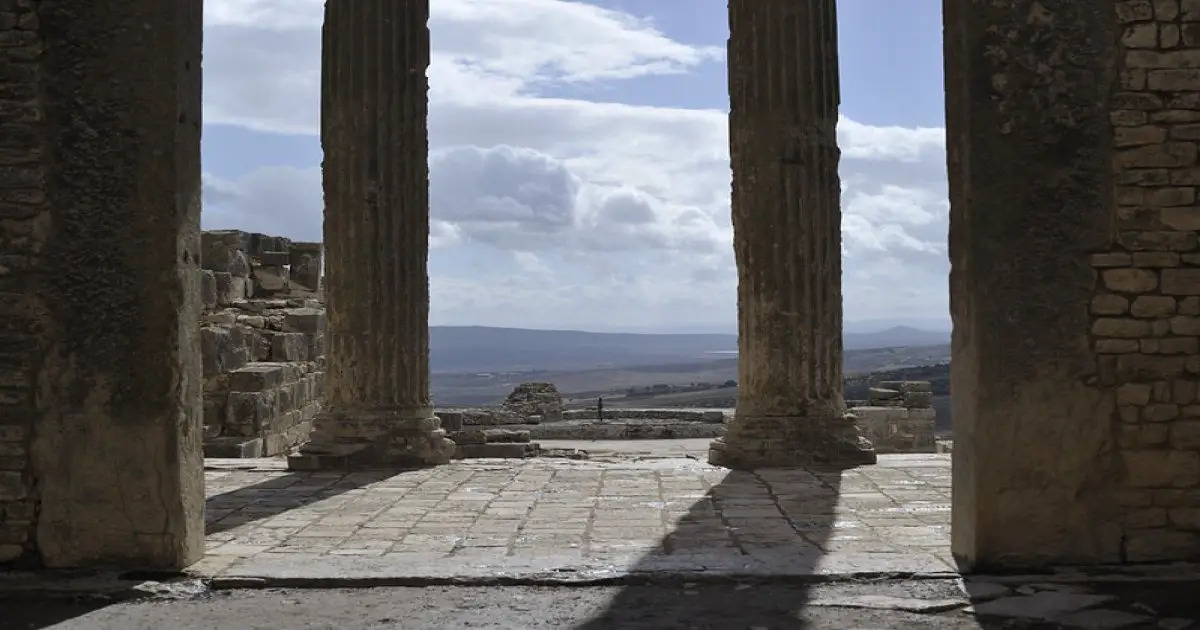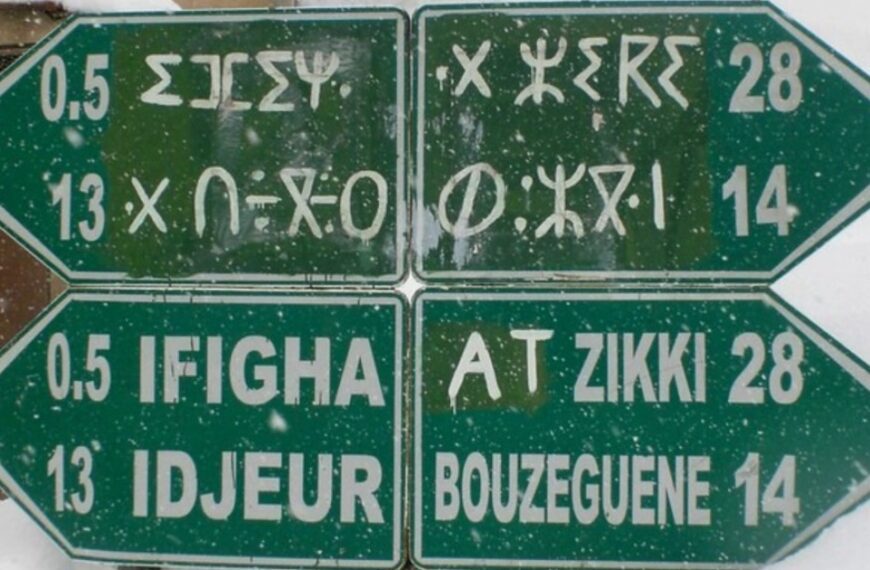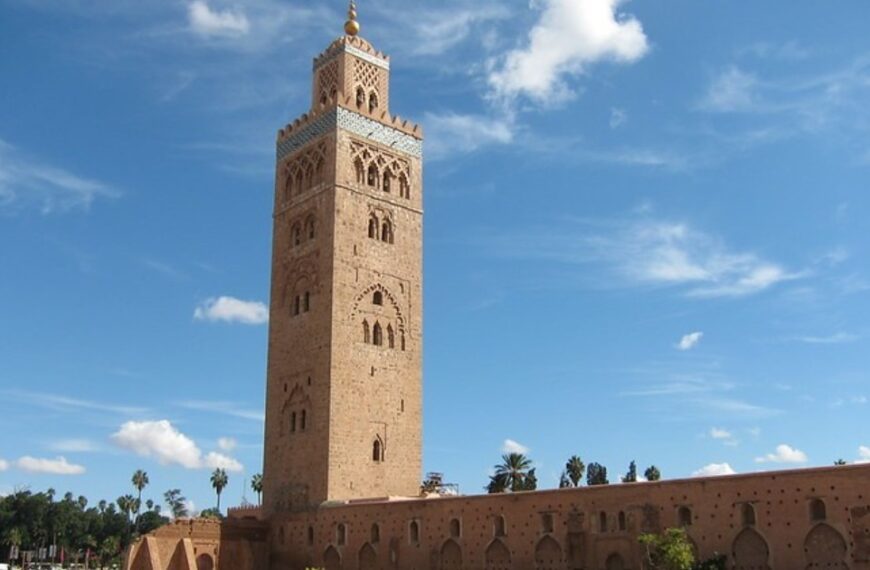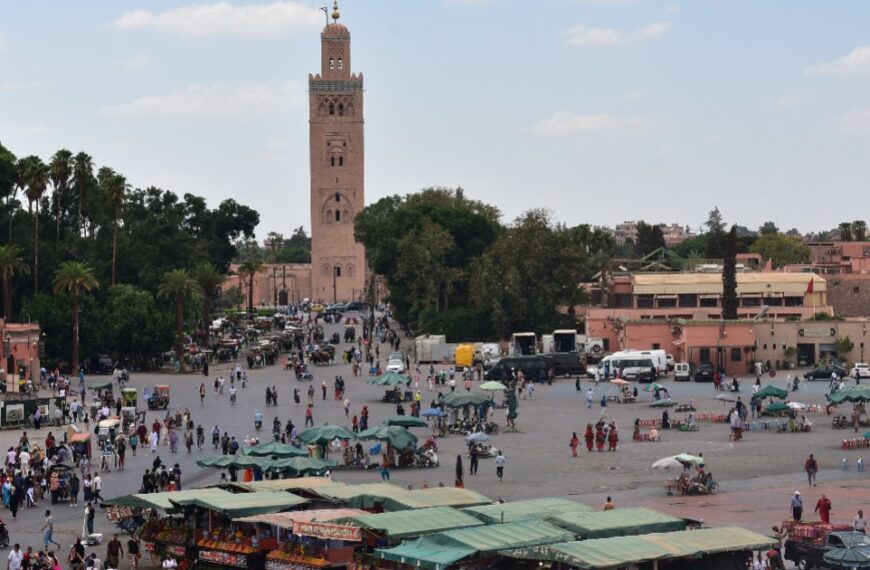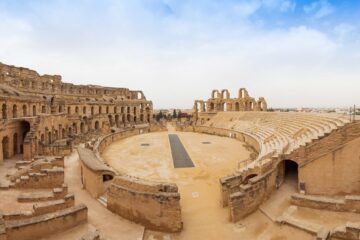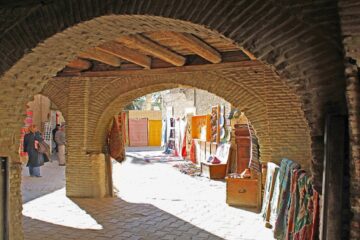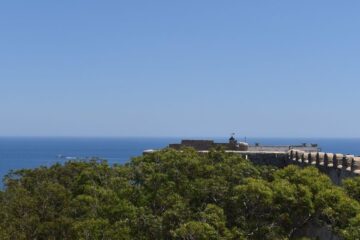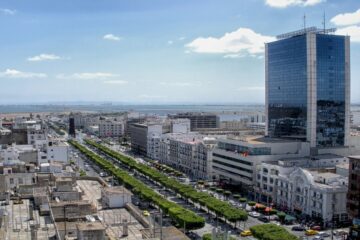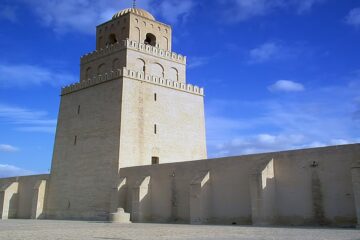Are you prepared to be whisked away on an exciting journey to the era of Roman North Africa? Dougga, Tunisia, is a must-see, intriguing location that showcases the region’s rich history and architectural wonders.
The ancient remains of Dougga will transport you to a fantastical realm, full of grandeur and wonder, where exploration and discovery are at one.
Explore the Roman remains of Dougga, which include temples, theaters, and baths, and imagine yourself back in time as you take in the impressive architecture. You will be awed by the old city’s architectural marvels and transported back in time to when it was alive with commerce and culture. You’ll feel free as you connect with the past and enjoy the freedom of discovery as you explore the tales of a bygone period with each step.
History Of Dougga, Tunisia
Dougga, in central Tunisia’s steep highlands, was once a thriving Roman city, and its history offers a fascinating look at its crumbling ruins. You can’t help but be impressed by the grandeur and majesty of this region’s past as you wander its well-preserved temples, theaters, and other structures.
You can almost make out the voices of the people who once flourished in these streets as you stroll through them.
Dougga, however, has a richer history than just its Roman roots. The Carthaginians had a foothold in this city as early as the fourth century BC. It had a major impact on the region’s politics and culture as a major commerce center.
It has seen the ebb and flow of power throughout the ages as several empires rose and fell. Dougga’s soul survives the centuries and the eventual desertion that came in the 7th century AD.
It’s a symbol of the perseverance of the people who formerly lived here and a tribute to their unyielding pursuit of freedom.
Dougga’s Architectural Marvels
The Capitol Building in Dougga is one of the city’s many architectural highlights. The majestic columns and ornate carvings of the Capitol of Dougga attest to the city’s status.
You’ll also be mesmerized by the Theater’s grandiosity. Its hillside location provides a stunning panorama and an insight into the fascinating world of pre-modern entertainment.
Finally, you will be awed by the Temple of Minerva. The facade, which has been kept in remarkable condition, is a stunning example of Roman architecture and design.
The architectural wonders of Dougga as a whole are impressive, with each building highlighting its own special qualities and background.
The Capitol Of Dougga
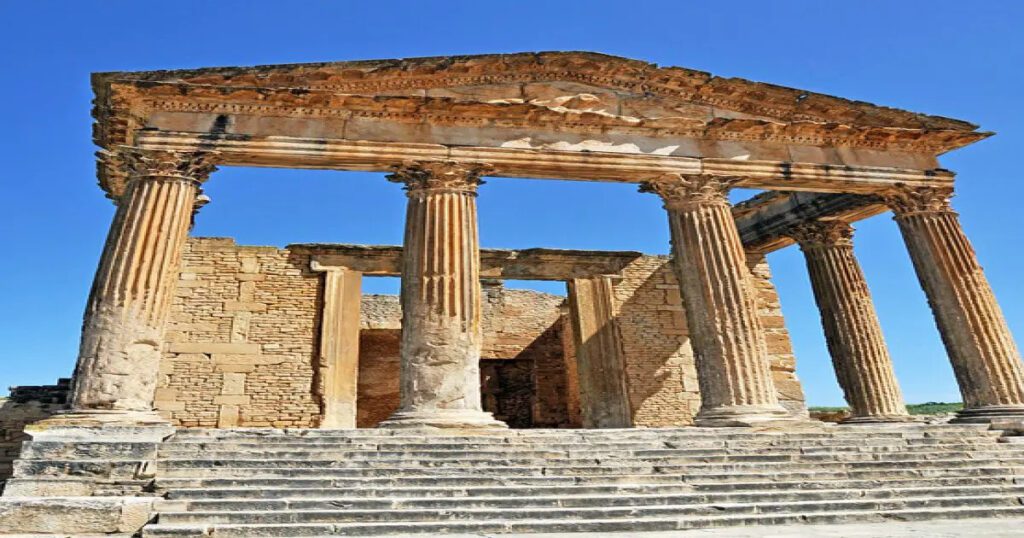
Visit the ancient city of Dougga in Tunisia and be awed by the Capitol, a temple to the Capitoline Triad. You can’t help but feel amazement and wonder as you gaze upon this magnificent masterpiece.
The Capitol in Dougga is more than a building; it’s a symbol of the power and splendor of the Roman Empire. As soon as you walk through the door, you’ll feel like you’ve stepped into another era.
The inviting portico, framed by six Corinthian columns, makes you want to take a closer look. The pediment above the portico is adorned with a beautiful relief of Jupiter, Juno, and Minerva, which can be seen as soon as one enters the building. Their regal stature inspires awe and admiration. They seem to be keeping an eye on the temple to make sure it doesn’t become damaged over time.
The Theater Of Dougga
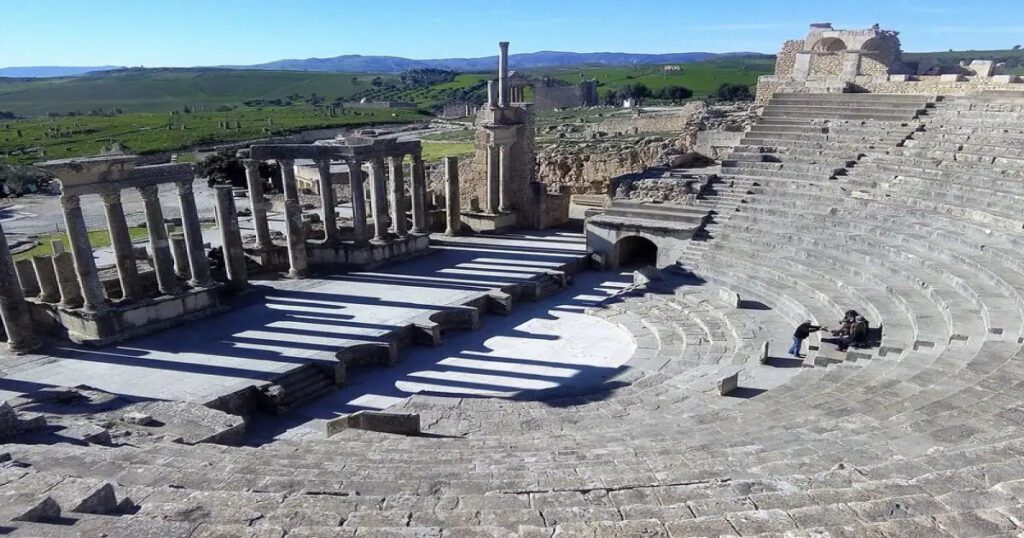
Enter the well-preserved Theater of Dougga, where the echoes of Roman splendor reverberate through the tiers of its beautiful semicircular auditorium, and be transported back in time.
You can’t help but feel astonishment and wonder as you take your place among the more than 3,500 spectators. The theater was constructed in the 2nd century AD under Emperor Marcus Aurelius and is a prime example of Roman architectural brilliance and splendor.
The Cavea, or auditorium, has three levels, each of which provides a unique vantage point for the performance. The Cavea, which is held up by 33 arcades, offers a breathtaking look at the performances that were formerly held here.
The stage itself is decorated with columns and sculptures, taking the audience back to a bygone era of performance art. When you’re here, you can’t help but experience a strong sense of nostalgia for the Roman world and the freedom and creativity it represented.
The Temple of Minerva
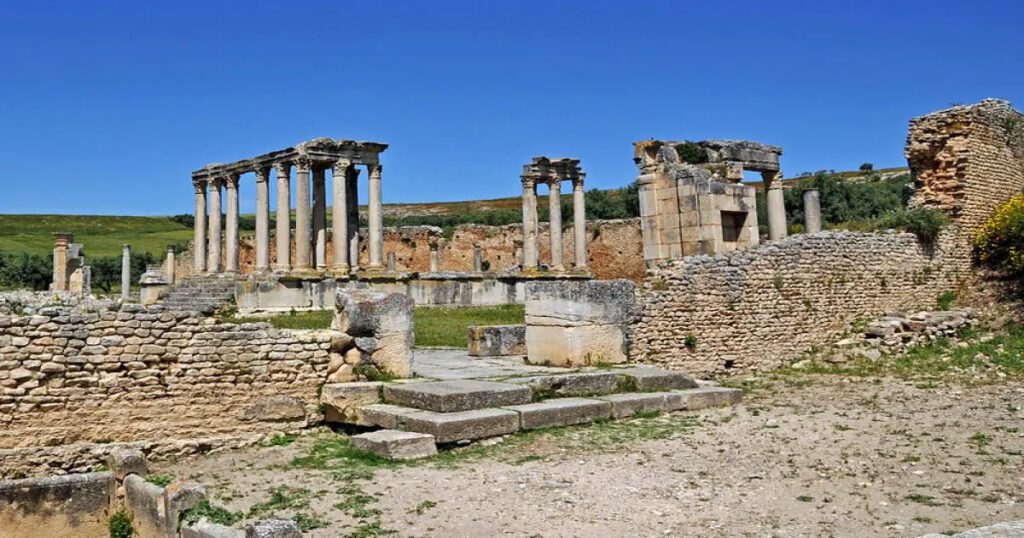
The Temple of Minerva, located in the western section of the archaeological site, is a beautiful and remarkably well-preserved place of religion. It’s impossible not to be impressed by the sheer scale and age of this building as you get closer.
The ancient Romans’ devotion to the goddess of knowledge is reflected in the Temple of Minerva, which is a tribute to their superior workmanship.
The temple’s rectangular form and beautiful portico, which is held up by six Corinthian columns, inspire awe and respect. The sculpture of Minerva above the pediment of the portico enhances the aesthetic value of the structure as a whole.
Honoring Minerva was seen by the ancient Romans as a sign of Roman support for learning and knowledge. Allow yourself to be moved by the ideals represented by the Temple of Minerva as you explore it.
The Mausoleum of Ateban
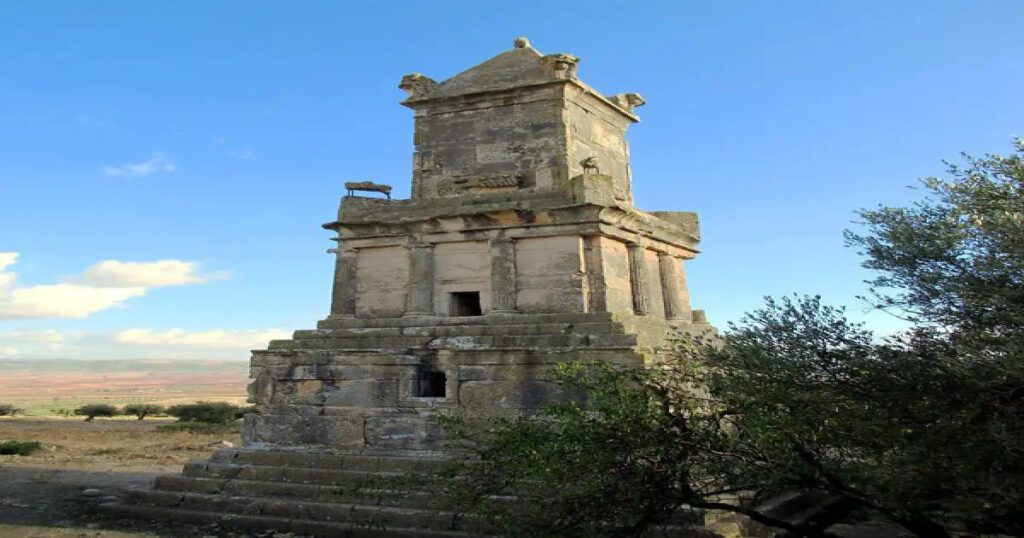
You can’t help but be struck with awe by the sight of the Mausoleum of Ateban as you get closer. The site was built in the 2nd century BC, and its massive size and impressive design are enough to impress even the most jaded among us.
The elaborate symbols and features etched into the stone walls attest to the stature of the individual buried there. It serves as a reminder of Dougga’s significant role in Roman North Africa’s history.
The Mausoleum of Ateban expresses more than just a longing for grandeur; it also reflects a yearning for independence. You can’t help but picture the lives of the people who formerly traversed these cobblestone streets as you stand in front of it. The mausoleum becomes a symbol of their fight, a constant reminder that there is always a desire for freedom, no matter how dire the circumstances.
Triumphal Arch of Septimius Severus
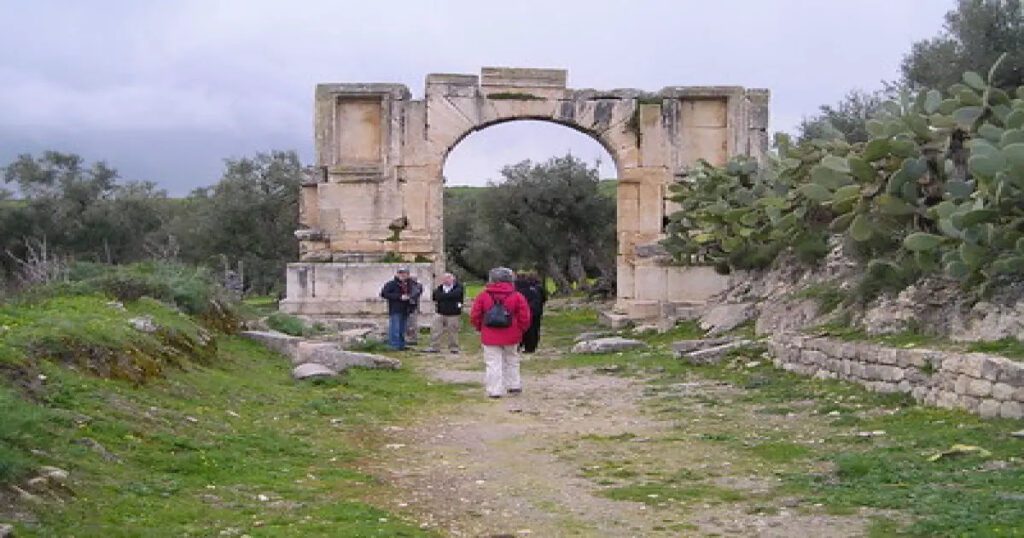
Enter the opulence of the Triumphal Arch of Septimius Severus, and you will find yourself in another era. It’s impossible to ignore the arch’s beauty as a symbol of the Roman Empire’s greatness and might.
As you go through the arch, keep an eye out for the beautiful reliefs that line it. These reliefs celebrate Septimius Severus’ victory in the Parthian War, a testament to his leadership and fortitude. Careful carving of each detail makes it possible to visualize the victories and tribulations of that era.
The Triumphal Arch of Septimius Severus is a symbol of Dougga’s steadfast spirit and willpower. It represents their unyielding will and their desire for independence.
The Role Of Dougga, Tunisia, In The Past
Picture yourself in wonder as you explore the ancient remains of Dougga in Tunisia and learn about the significant religious significance it had in the introduction of Christianity in North Africa.
As you wander the abandoned shrines and churches, you can almost hear the prayers and chants of the numerous worshippers who have found peace and freedom in these places throughout the centuries. As Christianity spread across the area, the once-thriving Roman city of Dougga played a pivotal role.
Dougga played a pivotal role in the propagation of Christianity and had a significant religious impact. When the Roman Empire converted to Christianity, the inhabitants of North Africa finally felt free from the shackles of pagan beliefs.
Christianity expanded rapidly, giving people the confidence to question authority and the freedom to live their lives as they saw fit.
You can sense the weight of history and the tenacity of people who struggled for religious freedom as you stroll through the remains of Dougga.
How To Get To Dougga, Tunisia?
Depending on what works best for you in terms of time and effort, you may choose from a number of different possibilities.
The closest railway station to Dougga is Teboursouk, which can be reached by train from Tunis. The ancient remains are just a short taxi or bus ride away. Just being on the train and taking in the beautiful scenery of North Africa will give you a sense of independence.
You may also take a bus from Tunis to Dougga, which would take around two hours. Those who value efficiency and comfort on their travels will like this alternative. You may kick back and take in the sights while the bus takes you where you need to go.
If you’d rather have your own means of transportation, you may hire a vehicle in Tunis and drive to Dougga. The trip takes around an hour and a half, allowing you plenty of time to stop and see sights along the way. To satiate your wanderlust, you might go at your own speed and take unplanned diversions.
Finally, a guided tour is an excellent choice if you want to find out more about Dougga’s history and importance. Visitors can explore the remains of this old Roman city at their own pace while hearing fascinating tales from their guides. The significance of the landmark to the local culture and history will become clearer to you.
Best Time To Visit Dougga, Tunisia
Dougga is at its most breathtaking in the spring and autumn when temperatures are warm and the landscape is at its lush greenest. Imagine a pleasant wind and the aroma of fresh flowers as you wander among the old Roman ruins.
Dougga is at its most enchanting and awe-inspiring at these times of the year.
The grandeur of the remains is matched by the natural beauty of the area, creating a picture-perfect setting for your journey.
Visit Dougga in the spring or autumn to let the city’s beauties enchant your senses, and if you’re looking for a trip that combines history, beauty, and a great longing for independence, you won’t find a better destination.
Conclusion
Thus, a trip to Dougga, Tunisia, is a great way to learn about Roman North Africa’s rich history.
Architectural wonders that have survived the ravages of time may be seen among the ancient ruins at this UNESCO World Heritage site. The beautiful temples and well-preserved theater at Dougga are a testament to the Roman Empire’s superior architecture.
Read also: Mahdia In Tunisia, Top Things To Do.

